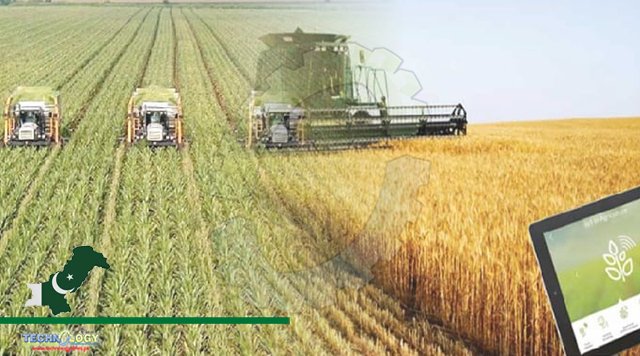Digital solutions, As flash floods recede in Pakistan, the country welcomes the first smart IoT (Internet of Things) farm in Rawalpindi.

Satellite navigation autopilot, robotic fertiliser applicator, agricultural UAV, climate and soil monitoring stations, solar-powered water pump…the deluge-ravaged land is recovering by virtue of digital solutions. “This is just a beginning,” Liu Yang Sloan, Secretary General of the Preparatory Committee, Organisation on Developing Countries Revitalisation (ODER), a sponsor of the programme, told China Economic Net (CEN). “Agriculture, which has an important bearing on people’s livelihood, shall be our priority in helping Pakistan recover from the aftermath of the floods.” By employing digital means in rural revitalisation, “we can not only empower rural areas, but can also help local communities coordinate international assistance and investment in post-disaster reconstruction,” Liu explained. The first step is macroeconomic and geospatial modelling. The population, total area, arable land area, GDP and the industry mix in the affected areas shall be simulated. In addition, based on GIS technology, geospatial modelling shall be carried out for the residential, agricultural and industrial areas in the affected region. With economic and geospatial data, a blockchain database model will be constructed that describes the economic activities of a region from five dimensions: crop, livestock, aquatic, mine, and non-agricultural industries.
This lays a foundation for the essential supporting system for digital rural revitalisation projects: rural cooperatives. “After decades of attempts, Pakistan has not been able to form a set of effective mechanisms for rural cooperatives. Digital solutions, We found through investigation that the core reason is that local people lack confidence in obtaining ideal returns from their investment in land and human resources, and there is no real-life success story in Pakistan for them to refer to,” said Liu. But in fact, local people’s cooperative can be transformed into a commercial entity that is of investment value to domestic and foreign investors, so that capital from different channels can go into the disaster-stricken areas more efficiently. According to Liu, a very relevant example for Pakistan is Liupanshui, Guizhou, a once impoverished city in southwestern China. By capitalising on the local arable land, woodland, natural scenery, and other ecological resources, villagers as stockholders of the industrial enterprises have contributed their strength to and shared the dividends of development. In this way, over 600,000 locals were lifted out of poverty. “For Pakistan to make better use of the aid and investments, locals should also be mobilised to become part of the post-construction endeavours. In addition, we will work with local mobile operators and banks to empower rural industries and cooperatives based on digital payment systems that are already in operation,” he said. “In each area, we will allocate a certain number of young people to help locals access the digital currency system. For villagers who do not have smartphones, we will help them out. In particular, we have designed the interface for developing countries to connect to the world’s mainstream central bank digital currency (CBDC). In Pakistan’s post-disaster reconstruction, crops like rice, poultry like chicken and sheep husbandry, and motorcycles are the likely scenarios for the application of CBDC,”
Source: This news is originally published by tribune